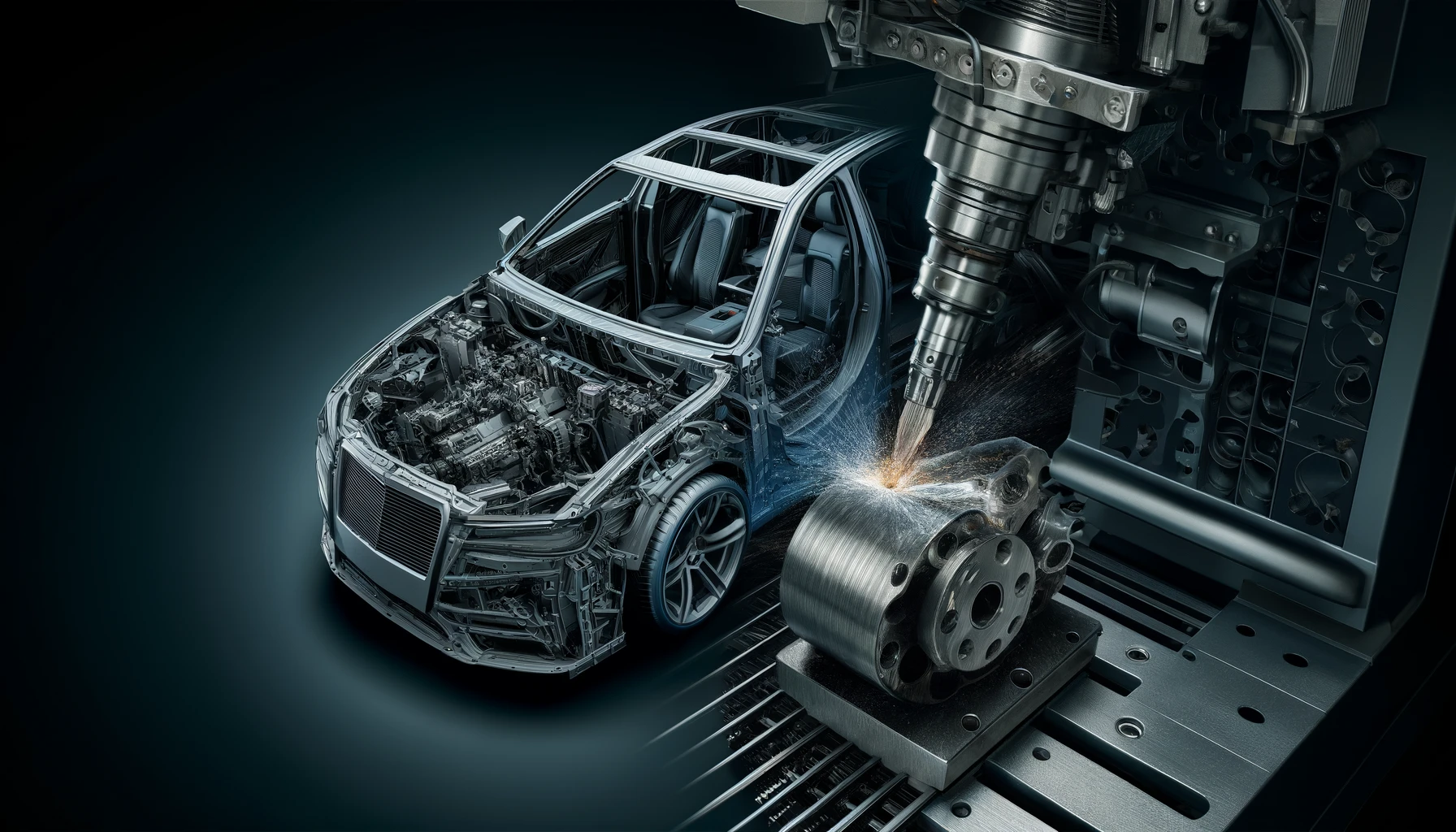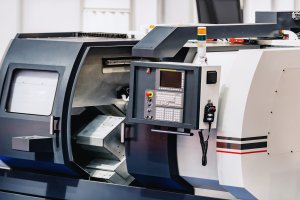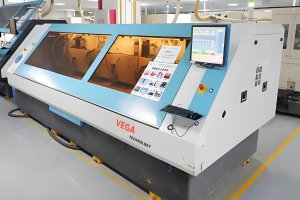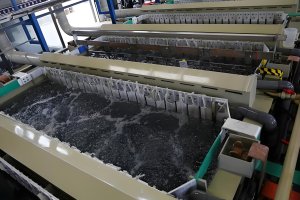What Makes Carbon Steel a Challenging Material for CNC Machining?
Carbon steel is widely used in the automotive industry due to its strength, durability, and cost-effectiveness. However, it presents several challenges in CNC machining that require careful consideration and specialized techniques to overcome.
1. Hardness and Toughness
Carbon steel’s hardness and toughness are beneficial for the durability of automotive parts but pose significant challenges during machining. The high hardness can lead to rapid tool wear, while the toughness can make it difficult to achieve precise cuts and smooth finishes.
2. Thermal Conductivity
Carbon steel has moderate thermal conductivity, which means that heat generated during machining is not easily dissipated. This can lead to overheating of the workpiece and tools, affecting dimensional accuracy and surface quality.
3. Machinability Variability
Different grades of carbon steel have varying machinability, influenced by their carbon content and other alloying elements. Higher carbon content generally results in harder material, which is more challenging to machine. Understanding the specific grade of carbon steel being used is crucial for optimizing machining parameters.
4. Chip Formation and Evacuation
Efficient chip formation and evacuation are essential to prevent tool damage and ensure a smooth machining process. Carbon steel tends to produce long, continuous chips that can entangle with the tool, necessitating effective chip-breaking strategies and coolant systems.
5. Surface Hardening
Some carbon steels can undergo surface hardening during machining, leading to increased tool wear and difficulty in maintaining surface finish quality. This requires careful control of machining parameters and tool selection to mitigate.
How Does Heat Generation Affect CNC Machining of Carbon Steel?
Heat generation is a critical factor in CNC machining, particularly when dealing with carbon steel. Managing heat effectively can significantly improve machining performance and the quality of the finished parts.
1. Sources of Heat Generation
Heat is primarily generated through friction between the cutting tool and the workpiece, as well as through plastic deformation of the material. The amount of heat generated depends on the cutting speed, feed rate, depth of cut, and tool geometry.
2. Effects of Excessive Heat
Excessive heat can lead to several issues, including thermal expansion of the workpiece, which affects dimensional accuracy. It can also cause tool wear and breakage, reduce the material’s mechanical properties, and lead to surface defects such as burns and discoloration.
3. Heat Management Techniques
Effective heat management techniques include:
- Coolant Systems: Using high-pressure coolant systems to dissipate heat and lubricate the cutting area.
- Cutting Parameters Optimization: Adjusting cutting speed, feed rate, and depth of cut to minimize heat generation.
- Tool Material and Coating: Selecting tools with high thermal conductivity and coatings that reduce friction and heat buildup.
- Interrupted Cuts: Using techniques such as milling instead of continuous turning to allow heat dissipation between cuts.
What Strategies Can Be Implemented to Enhance Tool Life When Machining Carbon Steel?
Tool life is a critical factor in the economics and efficiency of CNC machining operations. Enhancing tool life when machining carbon steel involves several strategies:
1. Tool Material Selection
Choosing the right tool material is essential. Carbide tools are commonly used for carbon steel due to their hardness and wear resistance. Coated tools, such as those with titanium nitride (TiN) or aluminum titanium nitride (AlTiN), provide additional protection against wear and heat.
2. Optimal Cutting Parameters
Setting optimal cutting parameters is crucial for extending tool life. This includes:
- Cutting Speed: Lower cutting speeds can reduce heat generation and tool wear.
- Feed Rate: Appropriate feed rates prevent excessive force on the tool.
- Depth of Cut: Shallower depths of cut reduce the load on the tool and minimize wear.
3. Advanced Coolant Systems
Using advanced coolant systems helps in reducing the temperature at the cutting zone, thus prolonging tool life. High-pressure and flood cooling systems are particularly effective in machining carbon steel.
4. Tool Geometry and Design
Optimizing tool geometry, such as rake and clearance angles, can improve chip flow and reduce cutting forces, thereby enhancing tool life. Specialized tool designs for carbon steel can also help in reducing wear.
5. Regular Tool Maintenance
Implementing a regular tool maintenance and reconditioning schedule ensures that tools are always in good condition. Regrinding and recoating tools can restore their cutting performance and extend their usable life.
Example Case: Enhancing Tool Life
In an automotive manufacturing setup, switching to AlTiN-coated carbide tools and optimizing cutting parameters resulted in a 30% increase in tool life. Implementing a high-pressure coolant system further reduced tool wear and improved surface finish quality.
Case Study: Overcoming Machining Challenges in Carbon Steel Automotive Parts
Background
An automotive parts manufacturer faced challenges in machining high-precision carbon steel components for an engine assembly. The components required tight tolerances and high surface finish quality.
Challenges
- Rapid Tool Wear: The high hardness of the carbon steel resulted in rapid tool wear, increasing downtime and production costs.
- Heat Management: Excessive heat generation led to thermal expansion, affecting dimensional accuracy.
- Surface Finish: Achieving the required surface finish was difficult due to tool wear and chip evacuation issues.
Solutions Implemented
- Tool Material and Coating: The manufacturer switched to carbide tools with a titanium aluminum nitride (TiAlN) coating, which offered better wear resistance and heat dissipation.
- Cutting Parameters Optimization: Cutting speeds and feed rates were optimized to balance heat generation and machining efficiency.
- Advanced Coolant System: A high-pressure coolant system was implemented to improve heat dissipation and chip evacuation.
- Tool Maintenance Schedule: A regular tool maintenance schedule was introduced, including frequent inspections and reconditioning of tools.
Results
- Increased Tool Life: Tool life increased by 40%, reducing downtime and tooling costs.
- Improved Surface Finish: The components achieved the required surface finish quality consistently.
- Enhanced Dimensional Accuracy: Thermal expansion issues were minimized, ensuring parts met tight tolerance specifications.
Conclusion
Through strategic adjustments in tool selection, cutting parameters, coolant systems, and maintenance practices, the manufacturer successfully overcame the machining challenges associated with carbon steel automotive parts.
The Importance of Surface Finish in Carbon Steel Automotive Components
Surface finish is a critical quality attribute for automotive components, influencing both performance and aesthetics. Achieving the desired surface finish on carbon steel parts requires meticulous attention to several factors.
1. Functional Requirements
Surface finish affects the performance of automotive components in various ways, including friction, wear resistance, and fatigue life. For example, a smoother surface finish can reduce friction in engine parts, improving efficiency and longevity.
2. Aesthetic Considerations
In addition to functional requirements, the surface finish also affects the appearance of automotive parts. High-quality surface finishes enhance the visual appeal and perceived quality of the vehicle.
3. Machining Parameters
Controlling machining parameters is essential for achieving the desired surface finish. Factors such as cutting speed, feed rate, and depth of cut play a significant role. Lower feed rates and shallower depths of cut generally produce better surface finishes.
4. Tool Condition
The condition of the cutting tool significantly impacts surface finish quality. Sharp, well-maintained tools produce cleaner cuts and smoother surfaces. Regular tool maintenance and timely replacement are crucial.
5. Coolant and Lubrication
Proper use of coolants and lubricants helps in achieving a high-quality surface finish. They reduce heat and friction, preventing surface defects like burns and roughness.
Example Table: Surface Finish Parameters for Carbon Steel Automotive Parts
| Parameter | Optimal Value | Impact on Surface Finish |
|---|---|---|
| Cutting Speed | 150-200 m/min | Higher speeds can improve surface smoothness |
| Feed Rate | 0.05-0.1 mm/rev | Lower feed rates produce finer surface finishes |
| Depth of Cut | 0.5-1 mm | Shallower depths minimize surface irregularities |
| Tool Material | Carbide with TiN | Provides sharp edges and wear resistance |
| Coolant Type | Water-soluble | Effective heat dissipation and lubrication |
| Lubrication Method | High-pressure jet | Ensures even coverage and cooling |
6. Surface Finishing Techniques
Post-machining finishing techniques, such as grinding, polishing, and honing, can further enhance the surface finish of carbon steel parts. These processes remove any remaining surface irregularities and improve overall smoothness.
How Can Advanced CNC Technologies Improve Machining of Carbon Steel?
The integration of advanced CNC technologies has revolutionized the machining of carbon steel, offering significant improvements in precision, efficiency, and overall quality.
1. Multi-Axis CNC Machines
Multi-axis CNC machines, such as 5-axis machining centers, allow for complex geometries and intricate designs to be machined with high precision. These machines provide greater flexibility and reduce the need for multiple setups, enhancing accuracy and efficiency.
2. Real-Time Monitoring and Adaptive Control
Advanced CNC machines are equipped with real-time monitoring systems that provide continuous feedback on machining parameters. Adaptive control systems can make immediate adjustments to cutting conditions, optimizing performance and preventing issues such as tool wear
and thermal expansion.
3. High-Speed Machining (HSM)
HSM technology enables higher spindle speeds and feed rates, reducing machining time while maintaining or improving surface finish quality. HSM is particularly beneficial for machining carbon steel, as it minimizes heat buildup and enhances tool life.
4. Advanced CAM Software
Computer-Aided Manufacturing (CAM) software facilitates precise programming, simulation, and optimization of machining processes. Advanced CAM software helps in creating efficient tool paths, reducing machining time, and ensuring consistent quality.
Example Case: Implementing Advanced CNC Technologies
A manufacturer of carbon steel automotive components integrated multi-axis CNC machines and advanced CAM software into their production line. This allowed for the machining of complex parts with tight tolerances in a single setup. The use of real-time monitoring and adaptive control systems reduced tool wear and improved surface finish quality, resulting in a 25% increase in production efficiency and a 15% reduction in scrap rates.
5. Automation and Robotics
Automation technologies, such as robotic loaders and unloaders, enhance production efficiency by reducing manual handling and minimizing human error. Automated systems ensure consistent quality and enable high-volume production runs.
6. Data-Driven Decision Making
The use of data analytics in CNC machining enables better decision-making by analyzing machining data, predicting tool wear, and optimizing processes. Data-driven insights lead to improved productivity, quality, and cost-effectiveness.
Other Articles You Might Enjoy
- Why Is Stainless Steel Preferred for CNC Machining Parts in SpaceX Starship Projects?
Advantages of Stainless Steel in Aerospace Applications Stainless steel offers several advantages in aerospace applications, making it an ideal material for SpaceX’s Starship components. Its high strength-to-weight ratio, excellent corrosion…
- Rapid Prototyping with CNC Machining: High-Quality Stainless Steel Parts
Rapid Prototyping with CNC Machining: High-Quality Stainless Steel Parts In the vast realm of manufacturing, Rapid prototyping and CNC machining are integral strategies that largely contribute to efficient production processes.…
- What Are the Benefits of Using CNC Machining for SpaceX Starship Stainless Steel Parts Production?
Precision and Accuracy in CNC Machining for SpaceX’s Starship Stainless Steel Parts CNC machining offers unparalleled precision and accuracy, which is crucial for the manufacturing of SpaceX's Starship components. The…
- What are the requirements for CNC machining of bearing parts?
Bearings are common and important parts in the automotive industry, which can support transmission components and transmit torque. Generally, CNC machining centers are used to process bearing parts. So what…
- Precision CNC Machining of Steel: High-Volume Production
Precision CNC Machining and High-Volume Production As an integral part of modern manufacturing processes, Precision Computer Numerical Control (CNC) machining brings about unmatched accuracy and consistency in the production of…
- Requirements for CNC Machining Parts
Preparation Work Complete the necessary preparation before machining, including process analysis, process route design, tool and fixture selection, and program compilation. online cnc machining service Operating Steps and Contents Start…






